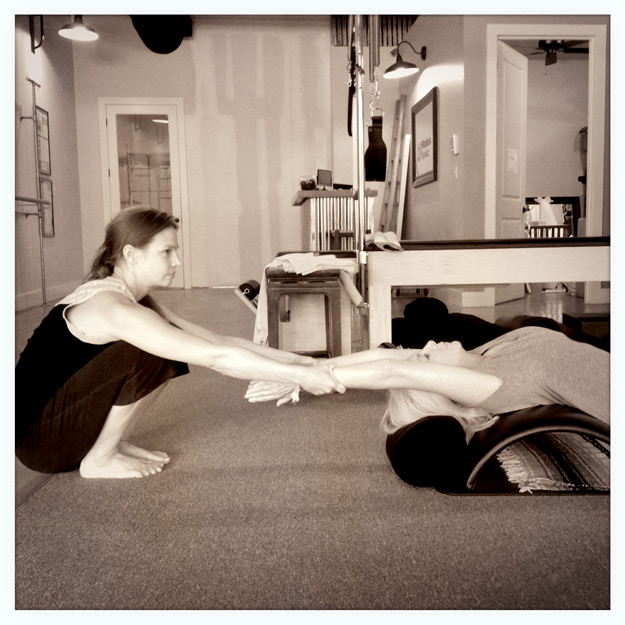
Recently I attended another fantastic Fascial Conditioning workshop with Divo Müller and Thomas Myers, two of the founders of the Fascial Conditioning protocol. It's a very exciting new field of study, and I'm grateful I can participate and learn so much since it's directly applicable to the work we do at Pilates Tonic.
Since the field of fascial fitness is so new, there is much to learn and the amount of fascia research has increased dramatically recently. In fact, things are moving so quickly that new discoveries sometimes even conflict with older research.
However, the pioneers in this field are very humble and happy to admit when new discoveries prove some of their own early beliefs about fascia and the body to be incorrect.
That’s one of my favorite things about learning from these people, they aren’t afraid to be wrong, and they rapidly adapt their new discoveries to the current body of knowledge and methodologies.
Case in point: I've been struggling recently with the differences between stretching and fascia fitness protocols.
I've been teaching stretching techniques using the contract and relax technique for a while. And I have no doubt that this approach is very beneficial and highly effective. I’ve seen too many success stories with my own eyes to believe otherwise.
Also, the contract and relax technique is a form of training the fascia. But, for the longest time, there has been a difference between contract/relax stretching and Fascial Conditioning that I’ve been unable to put my finger on.
So, you can imagine how thrilled I was to discover the answer during the July Fascial Conditioning workshop! I was able to put some more pieces of the body movement puzzle together and can better explain these two critical components of any well-planned fitness program.
In a nutshell, contract and relax stretching changes the body on a neurological level by remapping the brain. Fascial Conditioning changes the body on a structural level by re-training your body's fascial net, what holds everything in your body together.
Contract and Relax Stretching
Contract and relax stretching involves getting your body into a stretched position, and while maintaining that stretch, you gently contract the muscles you're stretching.
After the contraction, you hold the stretch, and on an exhale, see if you can gently go a bit deeper into that stretch.
This is a way of remapping your brain by teaching it that the perceived structural limitation is not a real boundary.
Here’s what’s so fascinating about getting more movement and flexibility back into your body by remapping your brain.
When a muscle feels like it’s shortened, it's actually the brain misinterpreting tension in the muscle. The muscle hasn’t actually changed length at all, but there is tension in the muscle and your brain decides it can only lengthen a certain distance, even if your muscle could stretch further. Your brain sends a signal telling the muscle that this is the limit and you'd better stop right there. So, you experience this feeling of tightness and restriction and don’t go any further.
The contract and relax approach actually remaps your brain to help you create a greater range of motion in your body, as well as release tension in the muscles.
Fascial Conditioning
Your fascia organizes itself in response to the movements, or lack of movements, you make each day.
If you have a specific way you stand and carry yourself on a regular basis, it becomes a habit. Over time, your body movement and position habits are built into your fascial body and become the structure of your body.
Your fascial structure is determined by your daily patterns and requires more than the stretch techniques used in the stretching method above, which is all about brain remapping.
Your fascial structure requires moving, stretching and working your body in ways you’re not accustomed to—it requires a complete strategy of adaptive movement, not just a single technique.
But these two methods of working with the body, specialized stretching and Fascial Conditioning, are extremely complimentary and they work together to contribute to the perfect fitness combination. To get maximum results from your efforts, you definitely need these two modalities included with your regular routine—no two ways about it. I've loved exploring the integration of these two modalities with Pilates so far this year and look forward to helping you learn more about them in the coming months.
Are you getting fascial fitness and contraction stretching into your daily routine yet? Have you had any experience with stretching, or release work that has had an impact in your life? I'd love to hear about your experience in the comments below.
See you at the studio,
Sydney




